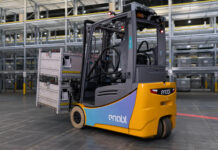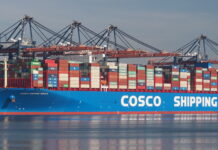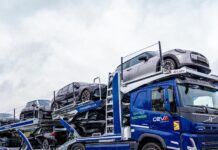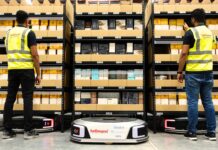
DSV is constructing two new warehouses totalling 175,000 sqm that will be powered entirely by on-site renewable energy. With more than 100,000 sqm of solar panels, DSV’s new facilities in Landskrona, Sweden, will run entirely on renewable energy and be able to provide charging for trucks and other electric vehicles. The surplus energy produced will supply the local electricity grid. These facilities will be a pilot providing valuable learnings for future DSV logistics infrastructure.
A New Benchmark
Reducing the energy demand and reliance on fossil fuels is a prerequisite to increasing energy security and enabling companies and countries to meet their sustainability targets. To achieve this, developing the infrastructure required to support new technologies is essential. DSV is committed to achieving net-zero CO2 emissions in 2050 and addressing the challenges of decarbonising the sector. As well as powering the facilities, DSV is building a blueprint for a solution to support the electrification of road haulier services, which is critical to achieving net-zero road transportation by 2050.
With these new facilities in Landskrona, Sweden, DSV is developing state-of-the-art infrastructure to support its operations and partners to transition from fossil to renewable energy supply. The facilities will provide energy for charging electric vehicles and additional energy back to the local electricity grid. More than 100,000 sqm of solar panels will enable DSV to power the facility entirely with renewable energy.
“The development of these pilot facilities will enable DSV to provide a fully renewable energy supply for our operations, reducing both our direct and indirect carbon emissions. This concept is a key component of DSV’s decarbonisation commitment, and I am proud to see DSV building infrastructure that will support the green transition of the industry,” says Jens Bjørn Andersen, Group CEO of DSV.
Enough Energy to Power 1,400 Households
By installing more than 100,000 sqm of solar panels, DSV will ensure that all energy requirements for the facility will be supplied by renewable energy. The capacity of the rooftop solar park will be 14 MwP, corresponding to the energy needed to power roughly 1,400 households for a year. The facilities will only require around 25% of the significant energy output. In addition to operating the warehouses, the remaining electricity produced from the solar panels will be stored in batteries and used for charging electric vehicles and trailers. Any excess capacity of energy will be transferred to the local electricity grid.
The Landskrona facilities are the first of their kind to be equipped by DSV Energy with renewable energy solutions. DSV Energy is a newly developed initiative specialising in energy production, consumption and trading. The facility will play an important role in DSV’s efforts to support the green transition and turn the company into an active energy producer rather than a passive user. Anders Rousing, Vice President, Group Operational Sustainability, DSV, is excited about the future potential that the project represents:
“Once fully operational, the Landskrona facilities will provide key learnings and enable us to develop best practices to implement in later projects. DSV Energy will play a significant role in helping us reduce our carbon footprint and support our long-term sustainability ambitions. We have four new DSV Energy sites planned in the near future, and we look forward to extending this initiative even further. I’m excited about how these developments will positively impact our and our customers’ ability to reduce emissions while continuing to operate with the same quality and productivity levels.”
Once finished, the 175,000 sqm facilities in Landskrona will include temperature-controlled storage areas and a range of automated solutions. Located next to existing facilities, the total warehousing area of over 225,000 sqm will make Landskrona one of the largest logistics centres in the Nordics. The new warehouses will be certified according to BREEAM Excellent standards, and construction is expected to be finished and ready for use in Q2 2024.
อัพเดตข่าวสารและบทความที่น่าสนใจในอุตสาหกรรมโลจิสติกส์ก่อนใคร ผ่าน Line Official Account @Logistics Mananger เพียงเพิ่มเราเป็นเพื่อน @Logistics Manager หรือคลิกที่นี่















